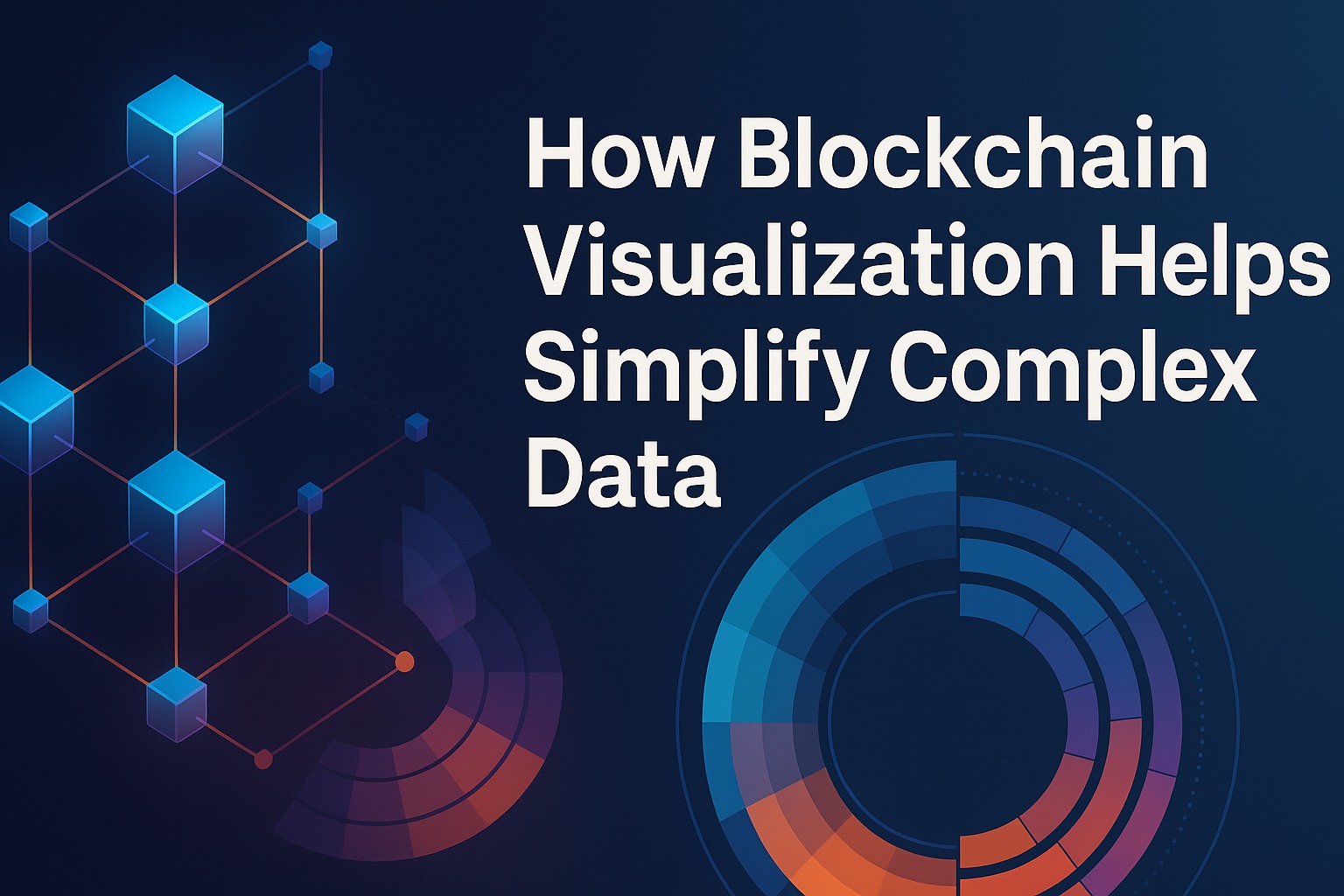Blockchain visualization is the practice of turning complex blockchain data into clear, visual formats that people can easily understand. The primary keyword here, blockchain visualization represents more than charts and graphs. It’s about building visual trust infrastructure that helps users, businesses, and regulators make sense of overwhelming blockchain activity.
Raw blockchain data is notoriously hard to read. Over 99% of people cannot interpret blockchain transactions directly, according to industry reports. This complexity creates opportunities for scams, mistakes, and mistrust. Visualization solves this by simplifying what’s on-chain into shapes, colors, and patterns anyone can understand.
Foundation: The Complexity of Blockchain Data
At its core, blockchain is an open ledger anyone can see the transactions. But the reality is different: while the data is public, it’s unreadable to most. Every wallet address looks like a random string of numbers and letters. Transactions are long, technical logs. Without tools, even developers struggle to extract meaning.
Why Complexity Creates Risk
- Fraud thrives in opacity: Scammers take advantage of users who can’t see what they’re signing.
- Barriers to entry: Everyday users are discouraged from adopting blockchain because it feels intimidating.
- Business inefficiencies: Enterprises that want to leverage blockchain often face steep learning curves and high integration costs.
What is Blockchain Visualization?
Blockchain visualization translates cryptographic data into human-readable visuals. Instead of raw addresses and hashes, users see patterns, charts, and interactive shapes that explain what’s happening.
Visualization is not only about aesthetics it’s about trust. When people can see what’s happening in real-time, they make informed decisions. This is why Hindsight VIP developed its Visual Explorer, which turns blockchain activity into intuitive visuals like colors and shapes.
For details on how Hindsight’s system works, see Hindsight’s Approach to Blockchain Visualization.
Benefits of Blockchain Visualization
- Clarity for Beginners: Even a 7th grader can understand where funds are going.
- Fraud Prevention: Clear visuals reveal when a transaction looks suspicious.
- Regulatory Compliance: Visual records make audits easier.
- Enterprise Adoption: Businesses can monitor transactions without hiring blockchain specialists.
Deep Dive: How Blockchain Visualization Works
Blockchain visualization uses a combination of data mapping, analytics, and design systems. Here’s how it breaks down:
1. Data Mapping
The blockchain ledger is scanned in real-time. Addresses, transactions, and smart contracts are grouped into recognizable clusters.
2. Analytics
Patterns like large transfers, repeated activity, or unusual wallet behavior are flagged for review.
3. Visual Design
The flagged data is translated into visuals:
- Colors represent types of transactions.
- Shapes represent categories of wallets.
- Motion shows transaction flows.
This process transforms the blockchain from text-based chaos into interactive visual trust maps.
Common Misconceptions About Blockchain Visualization
- “It’s just graphs and dashboards.” In reality, blockchain visualization is about literacy and comprehension, not just analytics.
- “Only developers need it.” Everyday users benefit most, since they’re most at risk.
- “Visualization adds security.” Visualization itself doesn’t stop fraud, but it empowers users to spot red flags.
Applications of Blockchain Visualization
Blockchain visualization is already driving adoption in several fields:
1. DeFi Platforms
Visualization helps users see lending and borrowing flows, preventing confusion and rug pulls.
2. NFT Marketplaces
Creators and buyers can trace royalties and ownership history in real-time.
3. Supply Chain Transparency
Blockchain visualization makes it possible to track products from farm to shelf.
4. Government and Compliance
Auditors can use visualization to ensure funds are not being misused.
For further exploration, check the Smart Contracting Guide to see how visualization helps verify contract interactions.
Case Studies in Blockchain Visualization
Case Study 1: Fraud Detection in DeFi
A lending platform integrated blockchain visualization to display lending pools visually. Suspicious withdrawals were immediately flagged, saving users millions.
Case Study 2: Transparent Voting in DAOs
One DAO introduced visualization of member votes. Instead of raw wallet addresses, members saw pie charts and motion diagrams. This improved participation by 40%.
Case Study 3: NFT Authenticity
An NFT marketplace displayed ownership history as a chain of icons, helping buyers verify authenticity at a glance.
Security and Blockchain Visualization
Security remains a major challenge in blockchain. Visualization doesn’t eliminate threats but strengthens user defense.
Common Threats
- Phishing links trick users into signing malicious contracts.
- Reentrancy attacks exploit code flaws.
- Address impersonation misleads users.
Visualization as Defense
By showing what contract you’re really interacting with, visualization reduces the risk of blind trust. Hindsight’s Shape Mode™ is designed to visually differentiate contracts, making impersonation harder.
Future of Blockchain Visualization
The next wave of visualization tools will focus on:
- AI-powered insights: Automated pattern recognition.
- Cross-chain visualization: Mapping activity across multiple blockchains.
- User education: Turning visualization into interactive learning.
Advanced Topics in Blockchain Visualization
- Composability: Combining multiple visualized contracts into interactive layers.
- Predictive Analytics: Forecasting risk through transaction flows.
- Enterprise Dashboards: Tailored visualizations for specific industries.
Conclusion: Blockchain Visualization as Trust Infrastructure
Blockchain visualization is more than a feature, it’s a trust layer for the digital economy. It makes blockchain transparent, accessible, and safe for everyone, from beginners to enterprises.
